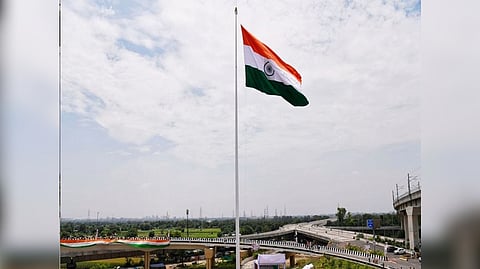

NEW DELHI: With Independence Day being just a day, away there is zeal and enthusiasm echoing the streets and nooks of the country, let's have a look at interesting facts about the Indian national flag.
The first Indian national flag was hoisted on August 7, 1906 at Parsee Bagan Square in Kolkata.
The flag had three major colours namely red, yellow and green.
The first variant closer to the current day Indian tricolour was designed by Pingali Venkayya in 1921.
It had two major colours-red and green. In 1931, a landmark resolution was passed adopting a tricolor flag as our national flag.
This flag, the forbear of the present one, was saffron, white and green with Mahatma Gandhi's spinning wheel at the center.
With a few modifications that included the addition of saffron and white colour, Ashoka chakra from lion capital of emperor Ashoka, the Indian Tiranga was officially adopted on July 22, 1947.
It was first hoisted on August 15, 1947.
Tiranga or Tricolor has three colors which include saffron on the top signifying strength and courage of the country.
White in the centre embodies peace and truth. The green colour at the bottom shows fertility, growth and auspiciousness of the land.
The Ashoka chakra also called as Dharma Chakra is placed at the centre and has 24 spokes signifying that there's life in movement and death in stagnation.
Earlier, Indian citizens were not allowed to hoist the National Flag except on selected occasions.
This changed after a decade-long legal battle by industrialist Naveen Jindal culminated in the landmark Supreme Court judgement of January 23, 2004 that declared that the right to fly the National Flag freely with respect and dignity is a fundamental right of an Indian citizen within the meaning of Article 19(1) (a) of the Constitution of India.
Azadi Ka Amrit Mahotsav is being observed by the Central government and the Indian populace to mark the country's 75th anniversary of independence with an enthusiasm to bring the Tiranga home and be a part of the 'Har Ghar Tiranga' campaign.
'Har Ghar Tiranga' is a campaign under the aegis of Azadi Ka Amrit Mahotsav to encourage people to bring the Tiranga home and to hoist it to mark the 75th year of India's independence.
The programme envisages inspiring Indians everywhere to hoist the national flag at their homes.
The aim of the programme is to make the relationship with the national flag a more personal one rather than just keeping it formal or institutional.
The official journey of Azadi Ka Amrit Mahotsav commenced on March 12, 2021, which started a 75-week countdown to our 75th anniversary of independence.
Visit news.dtnext.in to explore our interactive epaper!
Download the DT Next app for more exciting features!
Click here for iOS
Click here for Android